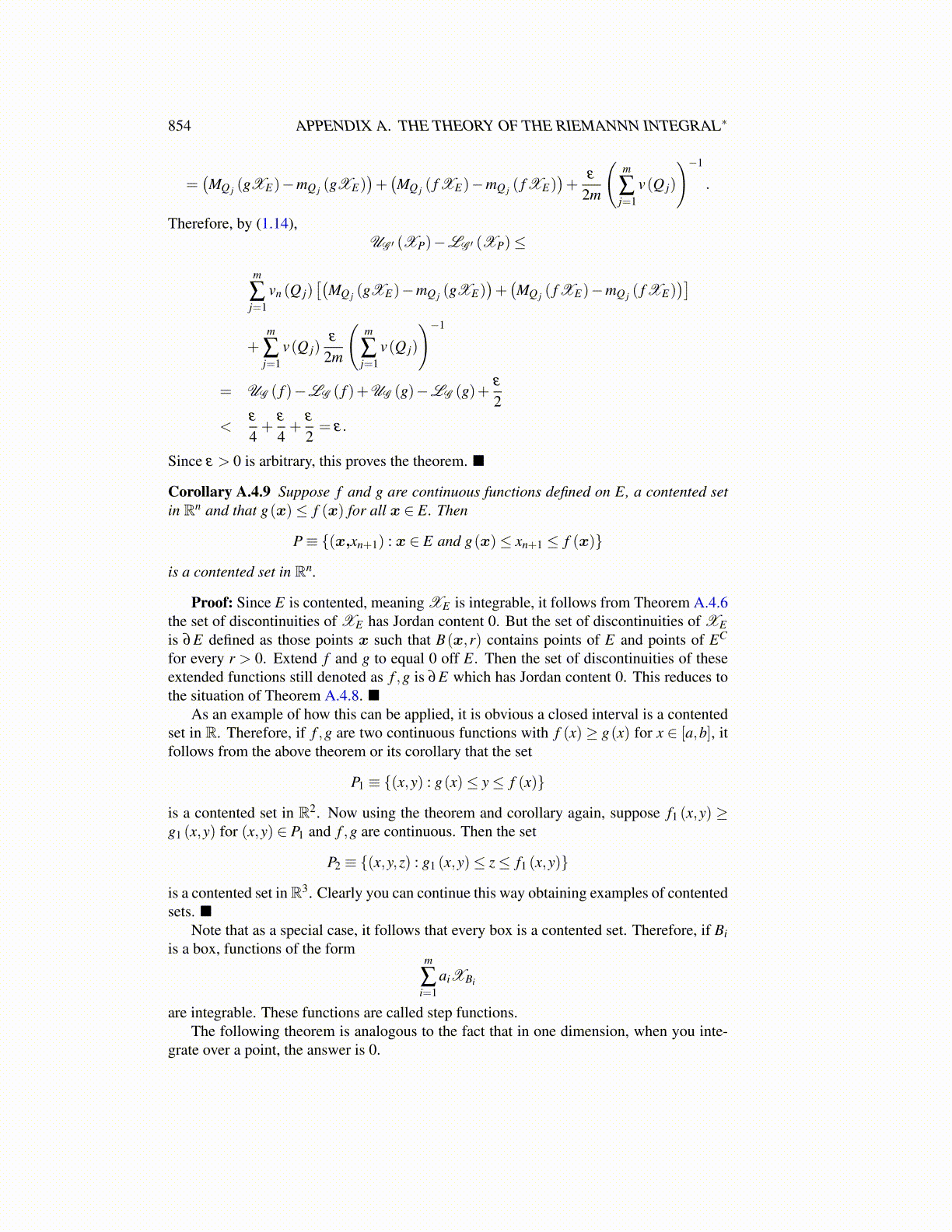
854 APPENDIX A. THE THEORY OF THE RIEMANNN INTEGRAL∗
=(MQ j (gXE)−mQ j (gXE)
)+(MQ j ( f XE)−mQ j ( f XE)
)+
ε
2m
(m
∑j=1
v(Q j)
)−1
.
Therefore, by (1.14),UG ′ (XP)−LG ′ (XP)≤
m
∑j=1
vn (Q j)[(
MQ j (gXE)−mQ j (gXE))+(MQ j ( f XE)−mQ j ( f XE)
)]+
m
∑j=1
v(Q j)ε
2m
(m
∑j=1
v(Q j)
)−1
= UG ( f )−LG ( f )+UG (g)−LG (g)+ε
2
<ε
4+
ε
4+
ε
2= ε.
Since ε > 0 is arbitrary, this proves the theorem. ■
Corollary A.4.9 Suppose f and g are continuous functions defined on E, a contented setin Rn and that g(x)≤ f (x) for all x ∈ E. Then
P≡ {(x,xn+1) : x ∈ E and g(x)≤ xn+1 ≤ f (x)}
is a contented set in Rn.
Proof: Since E is contented, meaning XE is integrable, it follows from Theorem A.4.6the set of discontinuities of XE has Jordan content 0. But the set of discontinuities of XEis ∂E defined as those points x such that B(x,r) contains points of E and points of EC
for every r > 0. Extend f and g to equal 0 off E. Then the set of discontinuities of theseextended functions still denoted as f ,g is ∂E which has Jordan content 0. This reduces tothe situation of Theorem A.4.8. ■
As an example of how this can be applied, it is obvious a closed interval is a contentedset in R. Therefore, if f ,g are two continuous functions with f (x) ≥ g(x) for x ∈ [a,b], itfollows from the above theorem or its corollary that the set
P1 ≡ {(x,y) : g(x)≤ y≤ f (x)}
is a contented set in R2. Now using the theorem and corollary again, suppose f1 (x,y) ≥g1 (x,y) for (x,y) ∈ P1 and f ,g are continuous. Then the set
P2 ≡ {(x,y,z) : g1 (x,y)≤ z≤ f1 (x,y)}
is a contented set in R3. Clearly you can continue this way obtaining examples of contentedsets. ■
Note that as a special case, it follows that every box is a contented set. Therefore, if Biis a box, functions of the form
m
∑i=1
aiXBi
are integrable. These functions are called step functions.The following theorem is analogous to the fact that in one dimension, when you inte-
grate over a point, the answer is 0.